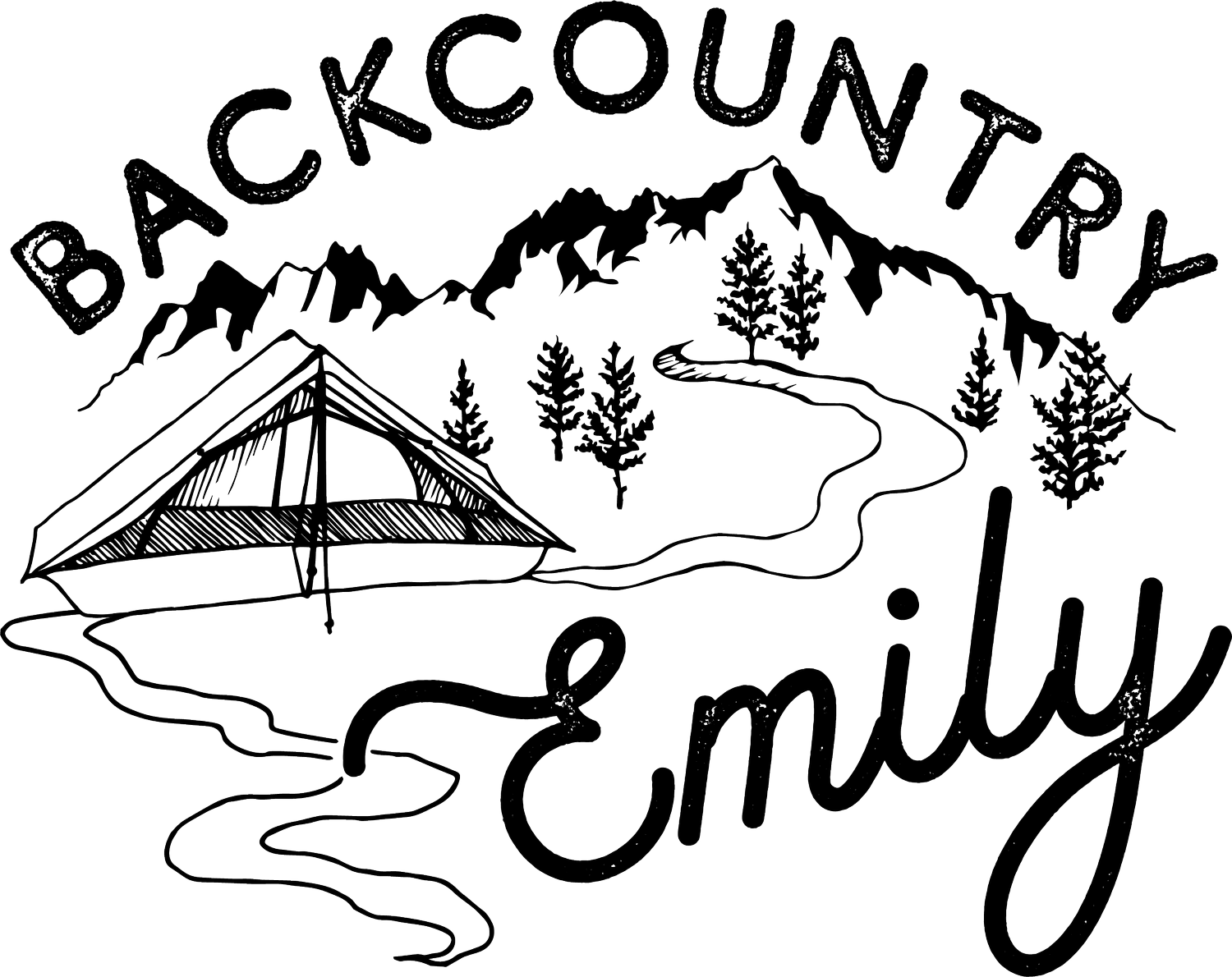How to Deal With Hard Days on Trail
Contrary to what social media might make you think, a thru-hike will bring hard days. I had my share of really hard days and days that were mostly good but had some hard moments. It’s difficult to talk about hard days, especially after the trail, because it’s so easy to look back on the whole experience with rose-colored glasses on. And everyone will have a different interpretation of what constitutes a hard day. The nice thing about having hard days on the PCT though was that the other hikers didn’t judge. Everyone had a bad day at some point, and everyone knows what the PCT journey is like, so no one was telling you to suck it up, or trying to beat you with their own hard day stories. Everyone was just very understanding.
Most of my really difficult days were from mental challenges. The thing about thru-hiking is that it gives you a lot of time to think: about your life, about the world, about your failures, regrets, and so on. Of course, there are good things you think about too, but usually, I had a good day when thinking about those things.
There were lots of days when I would just dwell on certain parts of my life that weren’t perfect. Failed relationships. Failed career paths. Failed college classes. Failing “adulting” by being on the trail. It would get pretty dark. Most of these bad thoughts would come when I was hiking alone for a while (like, days on end without a ton of human interaction), and were also exacerbated by really hot, smoky weather, particularly difficult terrain, or injury.
I may be smiling here, but I was feeling very homesick and unsure of my hike at nearly 50 miles in.
So, what would I do when these negative thoughts were constantly repeating through my head, calling me a failure, making it easy to just want to quit in the next town?
Take a Break
First, a break was always necessary. Sometimes I would be hiking and nearly close to tears, or already in tears. I would make myself sit down at the next possible comfortable (re: shaded) break spot. Sometimes I would be over my crying session at that point, and would just keep walking, other times I would sit or lay down, and just let the crying happen. Taking deep breaths and closing my eyes was also very helpful for calming down and centering myself.
Eat & Drink
Next, was to drink water and eat something. And not just take a little sip of water, but drink half a liter or more. And I would always try to find the snack that I was craving and eat it. It didn’t matter about rationing at that moment, just eat whatever sounded the best.
Accept & Validate
After I was feeling a little better and over whatever temper tantrum I was suffering from, I would try to remind myself that whatever I was feeling was valid, but it really had nothing to do with my hike. Crying about whatever was not going to hike miles for me or get me closer to camp or the next water source or town. I needed to get there myself, no matter how sad or hopeless or defeated I felt.
Do Something Happy
Once I was back moving again, I made sure to listen to media to make me happy. Whether that was a bomb playlist or a fun podcast, listening to things helped distract me and lift me out of mental funks.
I followed my exact words of advice in this scenario. Sometimes in the desert, it’s hard to find shade, so you make your own. We took a pretty long break to quell my mood and let the heat dissipate before continuing to hike on. I was feeling pretty crappy due to homesickness and feeling like I was hiking too slow for the boys in the group. Kristie made the decision to stick with me, which meant a lot to me at the time.
Super hot days, bugs attempting to eat you (leading to no breaks during the day), and your planned campsite being completely full at the end of hiking 25+ miles leads to some unhappy feelings. Food and sitting make it a little better.
Sometimes that wasn’t enough though. When you dwell on feelings of failure or hopelessness about your life, it does start to impact your hike - you’re still the same person, carrying the same baggage, after all. I don’t have the best answers or necessarily the best coping mechanisms, but I would try to compartmentalize the best I could. I also knew why I was out hiking, and I would just have to force myself to remember why I wanted to be out there. I’m stubborn, and I don’t like quitting, so that wasn’t an option. I was not going to let my past regrets interfere with my current hike.
I think having a strong sense of why you’re hiking is important. I read Pacific Crest Trials by Zach Davis before my hike, and I made my three lists. “I am thru-hiking the Pacific Crest Trail in 2018 because…”, “When I successfully thru-hike the Pacific Crest Trail, I will…”, and “If I give up on the Pacific Crest Trail, I will…”, and I listed bullet points within these lists over the span of weeks and months, not just in a few minutes. I really thought about these things leading up to my hike. I’d add thoughts to the lists when I was happy, angry, frustrated, excited, sad, confused, optimistic… pretty much the whole range of emotions. And I kept all of these notes on my phone, where I could easily access them and read them when I was feeling down or defeated by the trail. Remembering why I wanted to be out on the trail in the first place helped me to persevere and move past difficult days.
Interestingly enough, physically hard days weren’t as soul-crushing. If it was physically hard, the only time I had doubts and difficulties was when there was a social aspect to it, like pulling the group behind or not catching up to someone. You can imagine how inadequate you’d feel when you’re causing a group to slow down, or if you think that the people you’re hiking with don’t really want you there. I will talk more about the social aspect of thru-hiking in another post, but the old saying rings true here: “Hike Your Own Hike”. Of course, this is easier said than done sometimes. It really does take a lot of mental strength and courage to leave a group for your own good, even if it is painful. All I can say is you are stronger than you think if you can overcome something like this. My advice is to remember your reasons why: most likely, your reasons didn’t include people you met on the trail.
We are happy here - but that sunburn on my arms turned to second-degree burns and led to sun sickness. I made the hard decision to take care of myself and stay behind in town overnight. I didn’t see Hot Mess and Butters for the rest of the trail.
Punishingly hot and smoky days contributed to a lot of bad mental thoughts in Northern California. Getting norovirus in town and taking nearly 4 days off to recoup made me fall behind my little trail bubble. I knew no one, and hiked alone most days in this environment. It was lonely and I felt isolated.
During my hike, I found that Town was a huge temptation. There’s a reason it earns the nickname of “vortex”. Town was where I got a taste of regular life again. I’d get to catch up with family, eat normal food, sleep in a bed, watch TV, take a shower, etc. I would also get overwhelmed by Town. Sometimes I wouldn’t even respond to texts or DMs, and sometimes taking a shower seemed like a huge chore. But even though I would be a little stressed by Town, I was drawn there and wouldn’t want to leave, either. I always felt the biggest pull to quit and go home when I was leaving Town to go back to the trail. The funny thing is, once I was in my groove back on trail, I couldn’t think of a place where I’d rather be. It’s a very intentional choice to make to continue hiking a long trail. There are hundreds of opportunities to throw in the towel and give up. That’s a part of what makes thru-hiking so special I think: doing something with purpose, and continuing to make the choice to stay on the trail, especially when it is challenging or unpleasant.
There was a stretch in Washington where it felt like I never really dried out. It was misty and drizzly or rainy for a few days on end. And when I did dry out (pictured to right), I would just get wet again. But, magic happens when you need it on trail. Not only did I dry out at this cabin, but previous thru-hikers brought in trail magic snacks. And the next day, after I got rained on again, I ran into more trail magic at a random dirt road crossing. They let me hop into their car and turn the heat on to warm myself back up. And made GRILLED CHEESE. These are some examples of not to quit on a bad day: magic can happen (also, being only 250 miles from the end puts things into perspective).
So my biggest advice when you are feeling down or having hard days on trail is to let it happen, feel your feelings, and then treat yourself like a damn Queen because you are. You are doing something hard that is also seemingly meaningless in the grand scheme of the world, but it's not meaningless to your life. You deserve to treat yourself, even if you went on the trail seeking some kind of self-deprivation from the modern world.
If there is something situational that is causing you to have a bad day, I would try to find the humor in the situation. Sometimes just remembering that I only had myself to blame for deciding to thru-hike was humorous enough. Like “LOL I love torturing myself *cries*” could just make me laugh and get over it.
And my most important piece of advice is to never quit on a bad day. You will hear this constantly, and it is true. Quitting on a bad day will lead to regrets. You will probably always think “what if”. Tomorrow is a new day, and if tomorrow sucks a little bit, the day after that is a new day too. Funks are inevitable on the trail, but remember: something drew you to thru-hike. Don’t give up on that dream because of fleeting discomfort.










